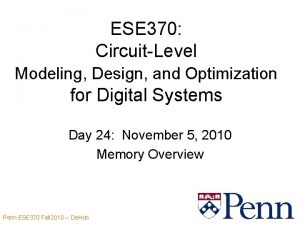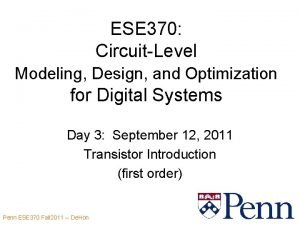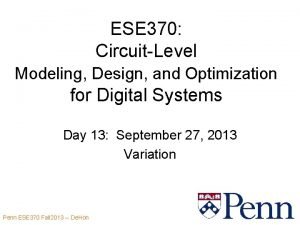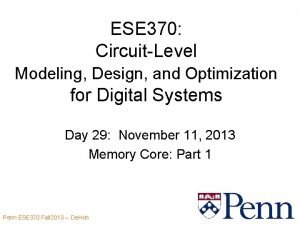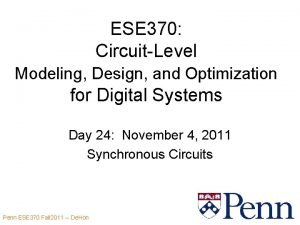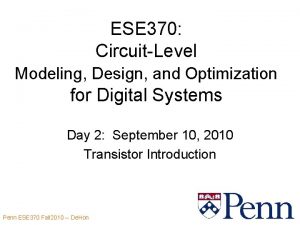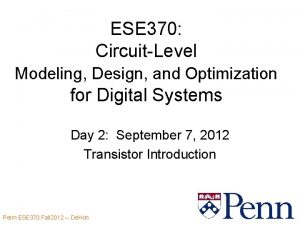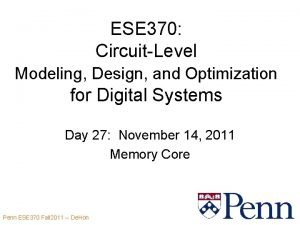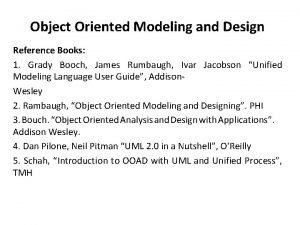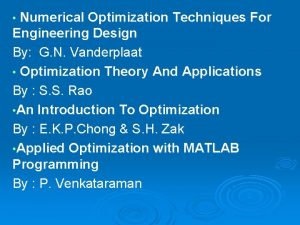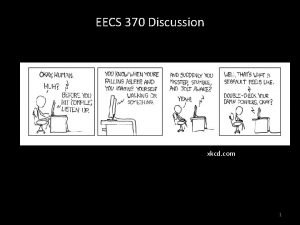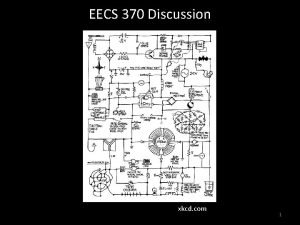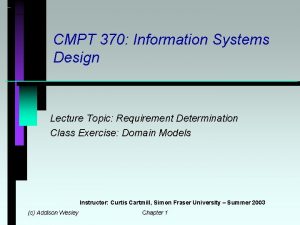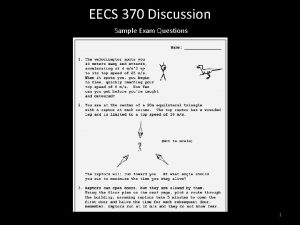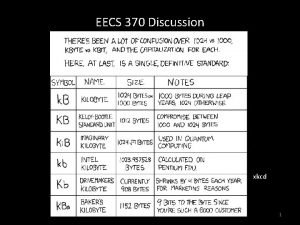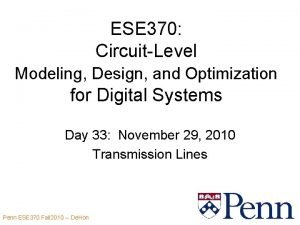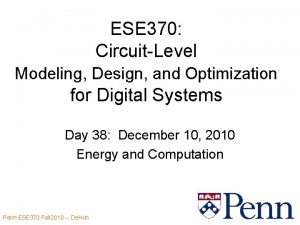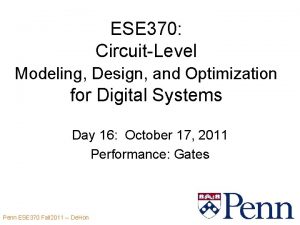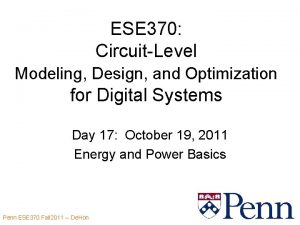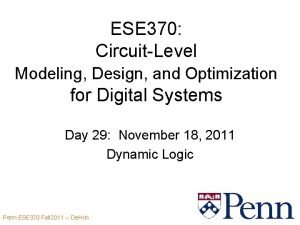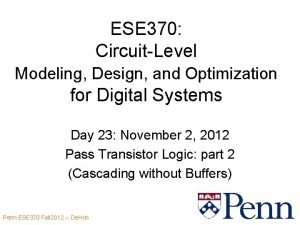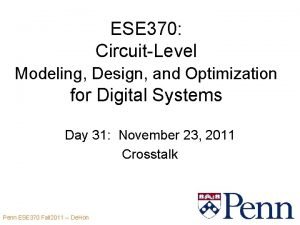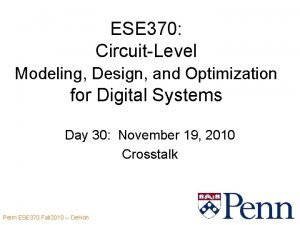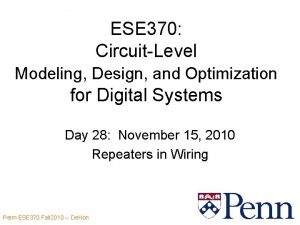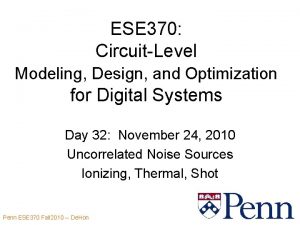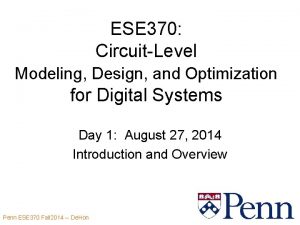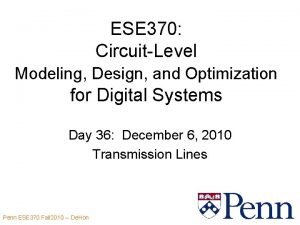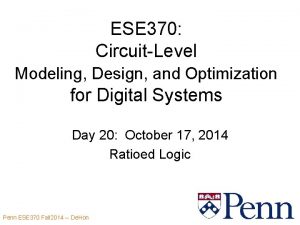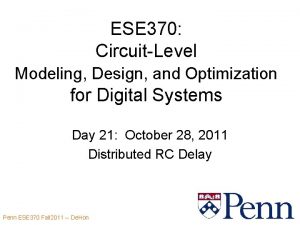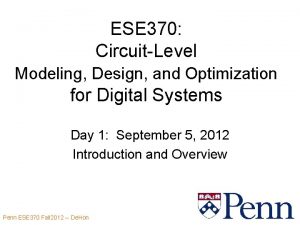ESE 370 CircuitLevel Modeling Design and Optimization for










![Oxide Thickness [Asenov et al. TRED 2002] Penn ESE 370 Fall 2013 -- De. Oxide Thickness [Asenov et al. TRED 2002] Penn ESE 370 Fall 2013 -- De.](https://slidetodoc.com/presentation_image_h/2340cc4b4ceb650c27b7b1671d673a36/image-11.jpg)















![Variation in 65 nm FPGAs [Gojman, FPGA 2013] De. Hon May 2013 27 Variation in 65 nm FPGAs [Gojman, FPGA 2013] De. Hon May 2013 27](https://slidetodoc.com/presentation_image_h/2340cc4b4ceb650c27b7b1671d673a36/image-27.jpg)
![LUT-to-LUT Same LAB • LAB (27, 22) [Gojman, FPGA 2013] De. Hon May 2013 LUT-to-LUT Same LAB • LAB (27, 22) [Gojman, FPGA 2013] De. Hon May 2013](https://slidetodoc.com/presentation_image_h/2340cc4b4ceb650c27b7b1671d673a36/image-28.jpg)
![Delay Map • LAB (27, 22) [Gojman, FPGA 2013] De. Hon May 2013 29 Delay Map • LAB (27, 22) [Gojman, FPGA 2013] De. Hon May 2013 29](https://slidetodoc.com/presentation_image_h/2340cc4b4ceb650c27b7b1671d673a36/image-29.jpg)

![Reduce Vdd (Cyclone IV 60 nm LP) [Gojman, FPGA 2013] De. Hon May 2013 Reduce Vdd (Cyclone IV 60 nm LP) [Gojman, FPGA 2013] De. Hon May 2013](https://slidetodoc.com/presentation_image_h/2340cc4b4ceb650c27b7b1671d673a36/image-31.jpg)































- Slides: 62

ESE 370: Circuit-Level Modeling, Design, and Optimization for Digital Systems Day 13: September 27, 2013 Variation Penn ESE 370 Fall 2013 -- De. Hon 1

Previously • Understand how to model transistor behavior • Given that we know its parameters – Vdd, Vth, t. OX, COX, W, L, NA … CGCS CGCB Penn ESE 370 Fall 2013 -- De. Hon 2

But… • We don’t know its parameters (perfectly) 1. Fabrication parameters have error range 2. Identically drawn devices differ 3. Parameters change with environment (e. g. Temperature) 4. Parameters change with time (aging) Why I am more concerned with robustness than precision. Penn ESE 370 Fall 2013 -- De. Hon 3

Today • Sources of Variation – Fabrication – Operation – Aging • Coping with Variation – Margin – Corners – Binning Penn ESE 370 Fall 2013 -- De. Hon 4

Fabrication Penn ESE 370 Fall 2013 -- De. Hon 5

Variation Types • Many reasons why things are different – Show up in many different ways. • Scales – Wafer-to-wafer, die-to-die, transistor-totransistor • Correlations – Systematic, spatial, random (uncorrelated) Penn ESE 370 Fall 2013 -- De. Hon 6

Source: Noel Menezes, Intel ISPD 2007 Penn ESE 370 Fall 2013 -- De. Hon 7

Process Shift • • Oxide thickness Doping level Layer alignment Growth and Etch rates and times – Depend on chemical concentrations • How precisely can we control those? • Vary machine-to-machine, day-to-day • Impact all transistors on wafer Penn ESE 370 Fall 2013 -- De. Hon 8

Systematic Spatial • Parameters change consistently across wafer or chip based on location • Chemical-Mechanical Polishing (CMP) – Dishing • Lens distortion Penn ESE 370 Fall 2013 -- De. Hon 9

FPGA Systematic Variation • 65 nm • Virtex 5 Penn ESE 370 Fall 2013 -- De. Hon [Tuan et al. / ISQED 2010] 10
![Oxide Thickness Asenov et al TRED 2002 Penn ESE 370 Fall 2013 De Oxide Thickness [Asenov et al. TRED 2002] Penn ESE 370 Fall 2013 -- De.](https://slidetodoc.com/presentation_image_h/2340cc4b4ceb650c27b7b1671d673a36/image-11.jpg)
Oxide Thickness [Asenov et al. TRED 2002] Penn ESE 370 Fall 2013 -- De. Hon 11

Line Edge Roughness • 1. 2 mm and 2. 4 mm lines From: http: //www. microtechweb. com/2 d/lw_pict. htm Penn ESE 370 Fall 2013 -- De. Hon 12

Optical Sources • What is the shortest wavelength of visible light? • How compare to 45 nm feature size? Penn ESE 370 Fall 2013 -- De. Hon 13

Phase Shift Masking Today’s chips use λ=193 nm Source http: //www. synopsys. com/Tools/Manufacturing/Mask. Synthesis/PSMCreate/Pages/default. aspx Penn ESE 370 Fall 2013 -- De. Hon 14

Line Edges (PSM) Source: http: //www. solid-state. com/display_article/122066/5/none/Feat/Developments-in-materials-for-157 nm-photoresists Penn ESE 370 Fall 2013 -- De. Hon 15

Intel 65 nm SRAM (PSM) Source: http: //www. intel. com/technology/itj/2008/v 12 i 2/5 -design/figures/Figure_5_lg. gif 16 Penn ESE 370 Fall 2013 -- De. Hon

Statistical Dopant Placement Penn ESE 370 Fall 2013 -- De. Hon 17 [Bernstein et al, IBM JRD 2006]

Random Trans-to-Trans • • Random dopant fluctuation Local oxide variation Line edge roughness Etch and growth rates – Stochastic process • Transistors differ from each other in random ways Penn ESE 370 Fall 2013 -- De. Hon 18

Source: Noel Menezes, Intel ISPD 2007 Penn ESE 370 Fall 2013 -- De. Hon 19

Impact • Changes parameters – W, L, t. OX, Vth • Change transistor behavior – W? – L? – t. OX? Penn ESE 370 Fall 2013 -- De. Hon 20

Example: Vth • Many physical effects impact Vth – Doping, dimensions, roughness • Behavior highly dependent on Vth Penn ESE 370 Fall 2013 -- De. Hon 21

Vth Variability @ 65 nm Penn ESE 370 Fall 2013 -- De. Hon 22 [Bernstein et al, IBM JRD 2006]

Impact of Vth Variation? • Higher VTH? – Not drive as strongly – Id, vsat (Vgs-VTH) – Performance? Penn ESE 370 Fall 2013 -- De. Hon 23

Impact Performance • Vth Ids Delay (Ron * Cload) Penn ESE 370 Fall 2013 -- De. Hon 24

Impact of Vth Variation Penn ESE 370 Fall 2013 -- De. Hon Think NMOS Vgs = Vdd 25

FPGA Logic Variation • Xilinx Virtex 5 • 65 nm • Altera Cyclone-II • 90 nm [Tuan et al. / ISQED 2010] Penn ESE 370 Fall 2013 -- De. Hon [Wong, FPT 2007] 26
![Variation in 65 nm FPGAs Gojman FPGA 2013 De Hon May 2013 27 Variation in 65 nm FPGAs [Gojman, FPGA 2013] De. Hon May 2013 27](https://slidetodoc.com/presentation_image_h/2340cc4b4ceb650c27b7b1671d673a36/image-27.jpg)
Variation in 65 nm FPGAs [Gojman, FPGA 2013] De. Hon May 2013 27
![LUTtoLUT Same LAB LAB 27 22 Gojman FPGA 2013 De Hon May 2013 LUT-to-LUT Same LAB • LAB (27, 22) [Gojman, FPGA 2013] De. Hon May 2013](https://slidetodoc.com/presentation_image_h/2340cc4b4ceb650c27b7b1671d673a36/image-28.jpg)
LUT-to-LUT Same LAB • LAB (27, 22) [Gojman, FPGA 2013] De. Hon May 2013 average 5% variation 28
![Delay Map LAB 27 22 Gojman FPGA 2013 De Hon May 2013 29 Delay Map • LAB (27, 22) [Gojman, FPGA 2013] De. Hon May 2013 29](https://slidetodoc.com/presentation_image_h/2340cc4b4ceb650c27b7b1671d673a36/image-29.jpg)
Delay Map • LAB (27, 22) [Gojman, FPGA 2013] De. Hon May 2013 29

Two LUT 2 LUT across Chip De. Hon May 2013 30
![Reduce Vdd Cyclone IV 60 nm LP Gojman FPGA 2013 De Hon May 2013 Reduce Vdd (Cyclone IV 60 nm LP) [Gojman, FPGA 2013] De. Hon May 2013](https://slidetodoc.com/presentation_image_h/2340cc4b4ceb650c27b7b1671d673a36/image-31.jpg)
Reduce Vdd (Cyclone IV 60 nm LP) [Gojman, FPGA 2013] De. Hon May 2013 31

Impact of Vth Variation? • Lower VTH? – Not turn off as well leaks more Penn ESE 370 Fall 2013 -- De. Hon 32

2004 Borkar (Intel) Micro 37 (2004) Penn ESE 370 Fall 2013 -- De. Hon 33

Operation Temperature Voltage Penn ESE 370 Fall 2013 -- De. Hon 34

Temperature Changes • Different ambient environments – January in Maine – July in Philly – Air conditioned machine room • Self heat from activity of chip • Quality of heat sink (attachment thereof) Penn ESE 370 Fall 2013 -- De. Hon 35

Self Heating Borkar (Intel) Micro 37 (2004) Penn ESE 370 Fall 2013 -- De. Hon 36

Thermal Profile for Processor Penn ESE 370 Fall 2013 -- De. Hon 37 [Reda/IEEE Tr Emerging CAS v 1 n 2 2011]

How does temperature impact on-current? • High temperature – More free thermal energy • Easier to conduct • Lowers Vth – Increase rate of collision • Lower saturation velocity • Lower saturation voltage • Lower peak Ids slows down • One reason don’t want chips to run hot Penn ESE 370 Fall 2013 -- De. Hon 38

Temperature and Ids Penn ESE 370 Fall 2013 -- De. Hon 39

How does temperature impact leakage current? • High temperature Lowers Vth Penn ESE 370 Fall 2013 -- De. Hon 40

Voltage • Power supply isn’t perfect • Differs from design to design – Board to board? – How precise is regulator? • IR-drop in distribution • Bounce with current spikes Penn ESE 370 Fall 2013 -- De. Hon 41

Aging Hot Carrier NBTI Penn ESE 370 Fall 2013 -- De. Hon 42

Hot Carriers • Trap electrons in oxide – Also shifts Vth Penn ESE 370 Fall 2013 -- De. Hon 43

NBTI • Negative Bias Temperature Instability – Interface traps, Holes • Long-term negative gate-source voltage – Affects PFET most • Increase Vth • Partially recoverable? • Temperature dependent Another reason not to run hot. Penn ESE 370 Fall 2013 -- De. Hon [Stott, FPGA 2010] 44

Measured Accelerated Aging (Cyclone III, 65 nm FPGA) Penn ESE 370 Fall 2013 -- De. Hon [Stott, FPGA 2010] 45

Coping with Variation Penn ESE 370 Fall 2013 -- De. Hon 46

Variation • See a range of parameters – L: Lmin – Lmax – Vth: Vth, min – Vth, max Penn ESE 370 Fall 2013 -- De. Hon 47

Impact of Vth Variation • Higher VTH – Not drive as strongly – Id, vsat (Vgs-VTH) • Lower VTH – Not turn off as well leaks more Penn ESE 370 Fall 2013 -- De. Hon 48

Variation • Margin for expected variation • Must assume Vth can be any value in range – Speed assume Vth slowest value Ion, min=Ion(Vth, max) Probability Distribution Id, vsat (Vgs-Vth) VTH Penn ESE 370 Fall 2013 -- De. Hon 49

Gaussian Distribution From: http: //en. wikipedia. org/wiki/File: Standard_deviation_diagram. svg 50 Penn ESE 370 Fall 2013 -- De. Hon

Impact • Given – Vth, nom = 250 m. V – Sigma 25 m. V • Probability of 100 transistor circuit in range when each has 96% prob. ? • …when each has 99. 8% probability? Penn ESE 370 Fall 2013 -- De. Hon 51

Impact • Given – Vth, nom = 250 m. V – Sigma 25 m. V • What maximum Vth should expect to see for a circuit of – 100 transistors? – 109 transistors? Penn ESE 370 Fall 2013 -- De. Hon 52

Variation • See a range of parameters – L: Lmin – Lmax – Vth: Vth, min – Vth, max • Validate design at extremes – Work for both Vth, min and Vth, max ? – Design for worst-case scenario Penn ESE 370 Fall 2013 -- De. Hon 53

Margining • Also margin for – Temperature – Voltage – Aging: end-of-life Penn ESE 370 Fall 2013 -- De. Hon 54

Process Corners • Many effects independent • Many parameters • With N parameters, – Look only at extreme ends (low, high) – How many cases? • Try to identify the {worst, best} set of parameters – Slow corner of design space, fast corner • Use corners to bracket behavior Penn ESE 370 Fall 2013 -- De. Hon 55

Simple Corner Example What happens at various corners? 350 m. V Vthp 150 m. V 350 m. V Vthn Penn ESE 370 Fall 2013 -- De. Hon 56

Process Corners • Many effects independent • Many parameters • Try to identify the {worst, best} set of parameters – E. g. Lump together things that make slow • Vthn, Vthp, temperature, Voltage • Try to reduce number of unique corners – Slow corner of design space • Use corners to bracket behavior Penn ESE 370 Fall 2013 -- De. Hon 57

Range of Behavior Probability Distribution • Still get range of performances • Any way to exploit the fact some are faster? Delay Penn ESE 370 Fall 2013 -- De. Hon 58

Probability Distribution Speed Binning Sell Premium Sell nominal cheap Discard Delay Penn ESE 370 Fall 2013 -- De. Hon 59

Idea • Parameters Approximate • Differ – Chip-to-chip, transistor-to-transistor, over time • Robust design accommodates – Tolerance and Margins – Doesn’t depend on precise behavior Penn ESE 370 Fall 2013 -- De. Hon 60

Midterm 1 • Contents should not be a surprise – Identify CMOS/non-CMOS – Identify CMOS function – Any logic function CMOS gate – Noise Margins – Circuit quasistatic configuration and switching delay Penn ESE 370 Fall 2013 -- De. Hon 61

Admin • Midterm Monday – 7— 9 pm in Towne 309 • Previous midterm – Solutions linked to 2010 --2012 syllabus • But only one midterm in 2010 so parts more advanced than where we are now • Review on Sunday – 5: 30 pm Penn ESE 370 Fall 2013 -- De. Hon 62
 Ese 370
Ese 370 Gate ese
Gate ese Ese 370
Ese 370 Ese 370
Ese 370 Ese 370
Ese 370 Ese 370
Ese 370 Vds vgs
Vds vgs Ese 370
Ese 370 Helen c. erickson nursing theory
Helen c. erickson nursing theory Relational modeling vs dimensional modeling
Relational modeling vs dimensional modeling Network design and optimization
Network design and optimization Dfd ch5
Dfd ch5 System requirements checklist output example
System requirements checklist output example Object oriented modeling and design books
Object oriented modeling and design books Device modeling for analog and rf cmos circuit design
Device modeling for analog and rf cmos circuit design Numerical optimization techniques for engineering design
Numerical optimization techniques for engineering design Automatic library search
Automatic library search Eecs496
Eecs496 Data formats of ibm 360/370
Data formats of ibm 360/370 Xkcd discussion
Xkcd discussion Xkcd scantron
Xkcd scantron Eecs 370 project 4
Eecs 370 project 4 Acq 370
Acq 370 Eecs 370
Eecs 370 Eecs 370 curve
Eecs 370 curve Cmpt 370
Cmpt 370 Csc charge
Csc charge Csc 370
Csc 370 Eecs 370 project 2
Eecs 370 project 2 650 en yakın yüzlüğe yuvarlama
650 en yakın yüzlüğe yuvarlama Eecs 370 curve
Eecs 370 curve Infinisource fsa
Infinisource fsa Democritus atomic model diagram
Democritus atomic model diagram Eecs370
Eecs370 Isy 370
Isy 370 Amd opteron
Amd opteron Ibm 370 series
Ibm 370 series Csc 370
Csc 370 Acq 370
Acq 370 Kontinuitetshantering
Kontinuitetshantering Typiska novell drag
Typiska novell drag Nationell inriktning för artificiell intelligens
Nationell inriktning för artificiell intelligens Returpilarna
Returpilarna Shingelfrisyren
Shingelfrisyren En lathund för arbete med kontinuitetshantering
En lathund för arbete med kontinuitetshantering Personalliggare bygg undantag
Personalliggare bygg undantag Tidbok yrkesförare
Tidbok yrkesförare Sura för anatom
Sura för anatom Vad är densitet
Vad är densitet Datorkunskap för nybörjare
Datorkunskap för nybörjare Tack för att ni lyssnade bild
Tack för att ni lyssnade bild Tes debattartikel
Tes debattartikel Magnetsjukhus
Magnetsjukhus Nyckelkompetenser för livslångt lärande
Nyckelkompetenser för livslångt lärande Påbyggnader för flakfordon
Påbyggnader för flakfordon Arkimedes princip formel
Arkimedes princip formel Offentlig förvaltning
Offentlig förvaltning I gullregnens månad
I gullregnens månad Presentera för publik crossboss
Presentera för publik crossboss Argument för teckenspråk som minoritetsspråk
Argument för teckenspråk som minoritetsspråk Plats för toran ark
Plats för toran ark Klassificeringsstruktur för kommunala verksamheter
Klassificeringsstruktur för kommunala verksamheter Mjälthilus
Mjälthilus
